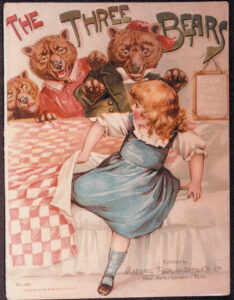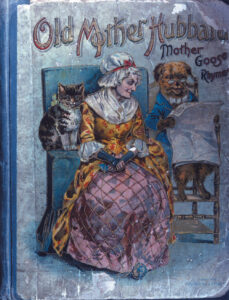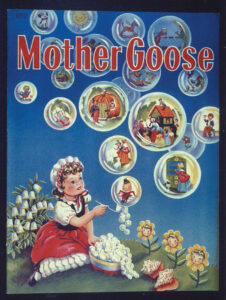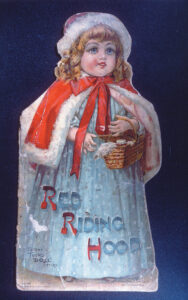 By Roy Nuhn
By Roy Nuhn
A bit more than two centuries have passed since German folklorists Jacob and Wilhellm Grimm’s first volume of fairy tales was published in 1812. A second volume followed two years later. The stories quickly became literary classics. People, young and old, have fallen in love with the Brothers Grimm ever since.
Today, the old fairy tales, along with traditional nursery rhymes, are once again in the spotlight. Two television series, “Grimm” and “Once Upon a Time” have enjoyed success on television. Others have come and gone or are in the planning stages.
On the silver screen a dozen, or so, movies have recently played or been scheduled. They include such films as “Hansel and Gretel: Witch Hunters” a couple of Snow White extravaganzas and one by Tim Burton about Cinderella.
However, the modern tellings of these are versions that the Brothers Grimm would hardly recognize. Snow White, for instance, while still the fairest of them all, is no longer a damsel indistress in need of a Prince Charming for protection. The gal now packs a mighty punch, often takes controland is quite sensual.
 Mainly oral up to the Middle Ages, folklorists first began writing down the old fairy tales in the 17th century. The most important investigators of all were two highly esteemed language and philology experts: the German-born Grimm brothers, who in early 1800s began collecting the spoken native stories of central Europe.
Mainly oral up to the Middle Ages, folklorists first began writing down the old fairy tales in the 17th century. The most important investigators of all were two highly esteemed language and philology experts: the German-born Grimm brothers, who in early 1800s began collecting the spoken native stories of central Europe.
After publication of their monumental two-volume compilation, they spent the next 40-plus years expanding and revising it. The first edition in English, titled Household Fairy Tales was printed in 1884, 130 years ago. It soon crossed the ocean to our shores and children here met up with the Pied Piper of Hamelin, Snow White and her Seven Dwarfs, Cinderella and all the other marvelous characters from the world of enchantment.
Other wellsprings of fairy tales were Aesop’s Fables and the stories of Hans Christian Andersen. There are other con- tenders but for all practical purposes the Brothers Grimm, along with Andersen and Aesop, constitute what we consider fairy tales.
Nursery rhymes, another great oral tradition, boasts a British background. Centuries-old verses, songs and riddles set to rhyme, most have roots set in historical happenings and personages of the 16th and l7th centuries. Like fairy tales, they were originally intended for adults.
 Illustrated nursery rhyme booklets for children first began appearing in this country in the 1890’s. Until around 1910, many of them were imports from English publishers.
Illustrated nursery rhyme booklets for children first began appearing in this country in the 1890’s. Until around 1910, many of them were imports from English publishers.
Notable in this group was raphael Tuck & Sons; whose ex- tensive “Father Tuck” line of fairy tales and nursery rhymes was a runaway best seller.
During the final decades of the 19th century, New York City’s McLoughlin Brothers grew to be the largest do- mestic supplier of all types of children’s litera- ture. Under their “Play and Pleasure” and “Cin- derella Series” trademarks they marketed countless titles drawn from German and Eng- lish sources. Over the years McLoughlin churned out endless printings of the Grimm’s fairy tales in all sorts of formats.
Around the same time, many other American companies, mostly in the Northeast, began seeing the field as a lucrative possibility. Among them were Sam Gabriel and Saalfield.
Many of the artists considered so collectable today, such Kate Greenaway and randolph Caldecott, illustrated nursery rhymes and fairy tales books, whose color plates were later used to print souvenir postcards.
From around 1903 into the 1920s, postcard publishers produced dozens of six, twelve and twenty-four-card sets about nursery rhymes and fairy tales.
One of the best is the 48-card set by F. Warne & Co. (Lon- don and New York). The German firm of FRB sold nearly one hundred different sets of six postcards each. From all indications, the cards by FRB were never exported to this country. A major producer of this topic, though, was (again!) Tuck. They marketed at least 12 sets of six or twelve postcards each. These were distributed in this country through the company’s New York City branch.
 Important American publishers included Newman Woolsey & Co., rotograph Co., Ullman Manufacturing, Augener Company and The Medici Society.
Important American publishers included Newman Woolsey & Co., rotograph Co., Ullman Manufacturing, Augener Company and The Medici Society.
A surprisingly large number of advertising postcards borrowed nursery rhymes and fairy tales themes. As did premium booklets promoting all sorts of products. The use of these imaginative stories and their characters by admen was a common practice throughout much of the last century.
Often the stories were badly. distored in order to incorporate mention of the sponsor’s product. Advertising post- card sets by Fralinger’s Original Salt Water Taffy, Metropolitan Life Insurance, and Minneapolis Knitting Works rank among the best in this category.













Follow Us